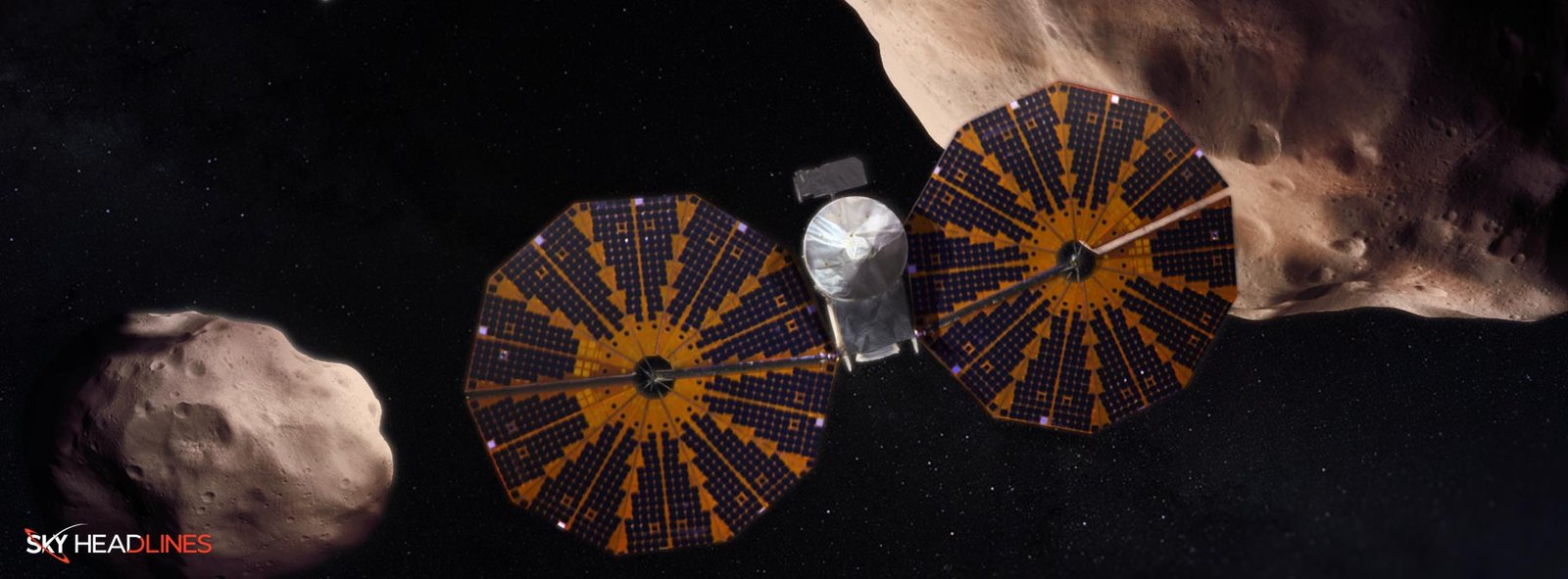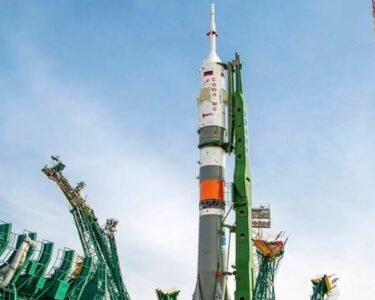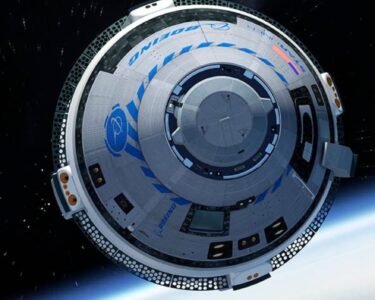NASA’s Lucy mission marks a new era in space exploration, as it is the first spacecraft launched with the specific aim of exploring the Trojan asteroids. These asteroids are a population of primitive celestial bodies that share Jupiter’s orbit, making them unique targets for scientific study. However, the spacecraft is set to embark on a series of multiple flybys of these asteroids, providing a close-up look at these “fossils” of planetary formation. With its launch date set for October 16, 2021, the Lucy mission represents a significant step forward in our understanding of the formation and evolution of our solar system.
Now before we discuss Lucy you might be wondering,
What are Trojan asteroids and what is the role of Lucy in their exploration?
The Trojan asteroids are small celestial bodies in our solar system. They are unique because they were left over from the formation of giant planets like Jupiter, Saturn, Uranus, and Neptune. These asteroids are remnants of the raw materials that came together to create the planets in our solar system. As a result, they are valuable targets for study.
An American planetary scientist Harold F. Levison says: “The Trojan Asteroids are leftovers from the early days of our solar system, effectively the fossils of planet formation.”
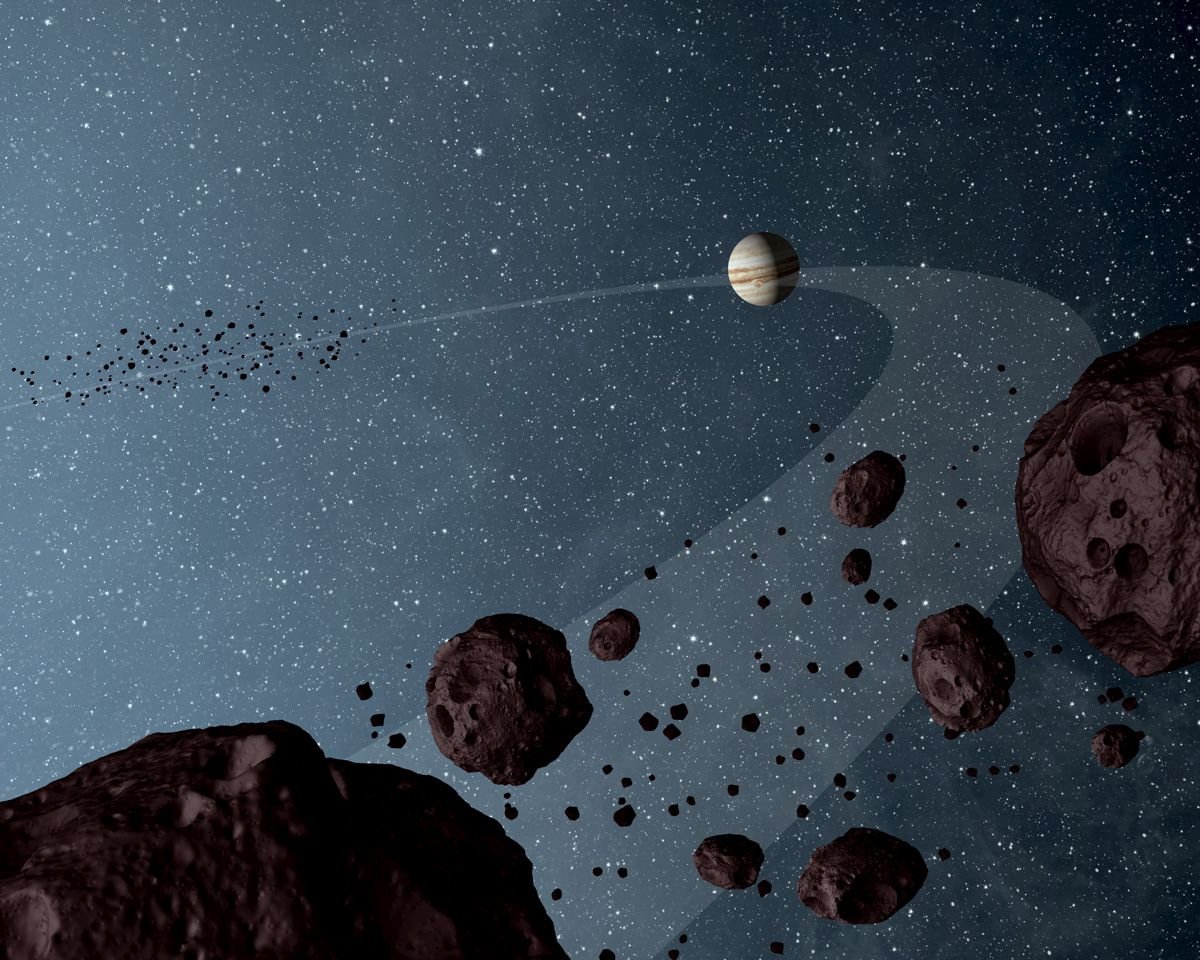
Unlike the objects in the main asteroid belt located between the orbits of Mars and Jupiter, the Trojan asteroids share Jupiter’s orbit around the sun, but they stay close to Jupiter’s L4 and L5 Lagrange points, which are gravitational stable locations in space. Moreover, the Trojan asteroids are on average just as far from Jupiter as Jupiter is from the Sun, and they are also known to be almost as numerous as the objects in the main asteroid belt. The Jupiter and Trojan asteroids are small, with the largest being around 160 miles (250 km) across. The asteroids are in a constant gravitational tug-of-war between the Sun and Jupiter.
Furthermore, this causes them to remain in the vicinity of Jupiter’s L4 and L5 Lagrange points. These points are located 60 degrees ahead and behind Jupiter. They form an equilateral triangle with the Sun. This makes the Lagrange points ideal places for the asteroids to remain in a stable orbit.
Lucy is the first spacecraft to explore Jupiter’s Trojan asteroids. It will fly by a total of eight asteroids over the next 12 years. This includes one main-belt asteroid and seven Trojans. This makes it the first single spacecraft mission in history to explore so many asteroids. The spacecraft’s journey will provide an up-close investigation of these “fossils” of planetary formation. This will provide invaluable insights into the formation and evolution of our solar system.
Now, we got you covered if you are thinking,
What are the objectives of Lucy’s mission?
NASA’s Lucy mission is an ambitious undertaking that aims to explore a record-breaking number of asteroids, including one asteroid in the solar system’s main asteroid belt and seven Trojan asteroids.
The Lucy mission has scientific objectives. It aims to achieve them by flying by and performing remote sensing on eight different Trojan asteroids during five flybys. The mission aims to study these asteroids in unprecedented detail. It seeks to provide insights into the formation and evolution of our solar system.
The primary objectives of the mission are to study the asteroids’ geological history, composition, and internal structure, providing valuable insights into the formation and evolution of our solar system.
In addition, the mission will study the color, composition, and properties of the regolith on the asteroids’ surface. By determining the distribution of minerals, ices, and organic species, the mission will provide clues to the asteroids’ formation and evolution, shedding light on the processes that led to the formation of planets like Earth.
The Lucy mission has a goal to determine the masses and densities of the Trojan asteroids. This information will provide insights into their internal structure and composition. To achieve this, the mission will study sub-surface composition through excavation by craters, fractures, ejecta blankets, and exposed bedding. By doing so, the mission will gain a better understanding of the asteroids’ bulk properties.
The Lucy spacecraft has a dual mission. Firstly, it will search for rings and satellites of the Trojan asteroids. This could give us valuable insights into how these asteroids formed and evolved. Secondly, the mission will investigate the potential for hazardous impacts from these asteroids. This will help us better understand how to protect Earth from asteroid impacts.
By studying the Trojan asteroid’s geological history, composition, and internal structure, the mission aims to advance our understanding of the early solar system and the processes that led to the formation of planets like Earth.
Now, let’s dig into the,
Launch of Lucy Mission
NASA’s Lucy mission launch on October 16, 2021, using a United Launch Alliance Atlas V rocket from Cape Canaveral Space Force Station in Florida. This mission is the first spacecraft to explore Jupiter’s Trojan asteroids. Moreover, it will also fly by a total of eight asteroids over the next 12 years. Furthermore, the spacecraft’s mission is to investigate the Trojan asteroids, which are remnants of the material that formed giant planets, and provide information about the formation and evolution of our solar system.
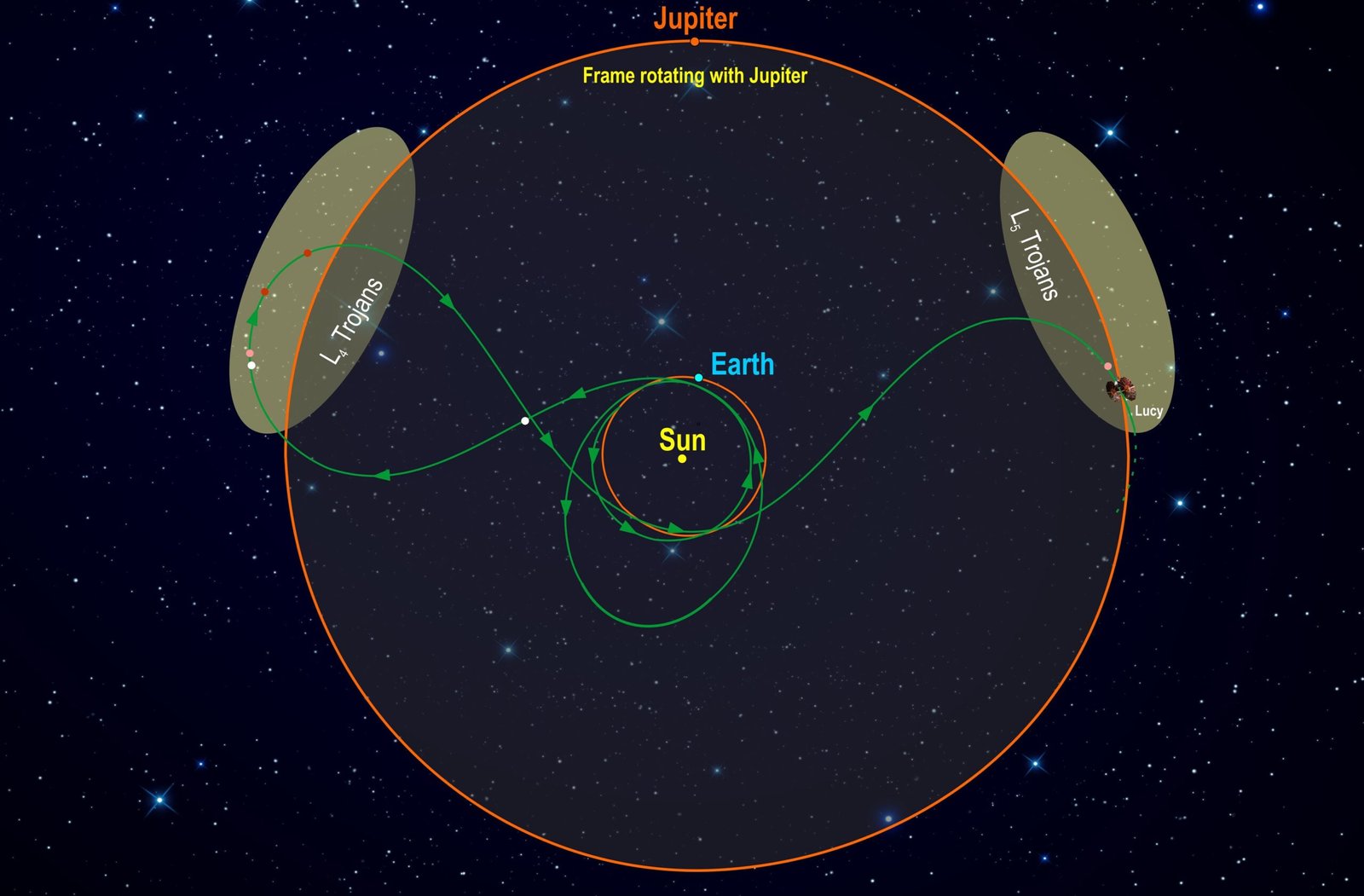
Hal Levison, Lucy’s principal investigator at Southwest Research Institute (SwRI) in Boulder, Colorado quoted: “We started working on the Lucy mission concept early in 2014, so this launch has been long in the making,” He added, “It will still be several years before we get to the first Trojan asteroid, but these objects are worth the wait and all the effort because of their immense scientific value. They are like diamonds in the sky.”
Journey of Lucy Mission!
Lucy’s Trojan destinations are located near Jupiter’s Lagrange points, where smaller masses can be trapped. One swarm of Trojans is ahead of Jupiter, and another is behind it. In 2022, during its initial Earth gravity assist, Lucy’s trajectory will accelerate and redirect beyond the orbit of Mars. After that, the spacecraft will return to Earth for a second gravity assist in 2024. Lucy’s journey towards the Donald Johanson asteroid. The Donald Johanson asteroid is present in the main asteroid belt of the solar system. Lucy will arrive at the Donald Johanson asteroid in 2025.
In 2027, Lucy will also travel towards the swarm located ahead of Jupiter to encounter its first Trojan asteroid. After completing its first four targeted flybys, the spacecraft will travel back to Earth for a third gravity boost in 2031, which will also catapult it to the trailing swarm of Trojans for a 2033 encounter.
“Today we celebrate this incredible milestone and look forward to the discoveries that Lucy will uncover,” said Donya Douglas-Bradshaw, Lucy project manager at NASA’s Goddard Space Flight Center in Greenbelt, Maryland, after the launch.
The spacecraft’s two solar arrays, each measuring nearly 24 feet in width, unfurled successfully about 30 minutes after launch and also began charging the spacecraft’s batteries to power its subsystems. Yet, at 6:40 a.m., Lucy sent its first signal to Earth from its antenna to NASA’s Deep Space Network. Lucy’s mission is the 13th in NASA’s Discovery Program, overseen by NASA’s Marshall Space Flight Center in Huntsville, Alabama.
Lastly,
The End of the Lucy Mission:
Lastly, when the Lucy mission will be nearing its end. The spacecraft will travel on a stable orbit from near the Earth’s orbit to the Trojan Swarms and back again. The team plans to orbit the spacecraft carefully to avoid contamination for over a century. In the future, if nobody collects Lucy as a historical artifact, the spacecraft’s orbit will become unstable. Jupiter’s gravitational pull could fling it out of the Solar System or send it crashing into the Sun. However, the legacy of the Lucy mission will inspire future generations. In such a way, they explore the mysteries of our Solar System and the vast universe beyond.


